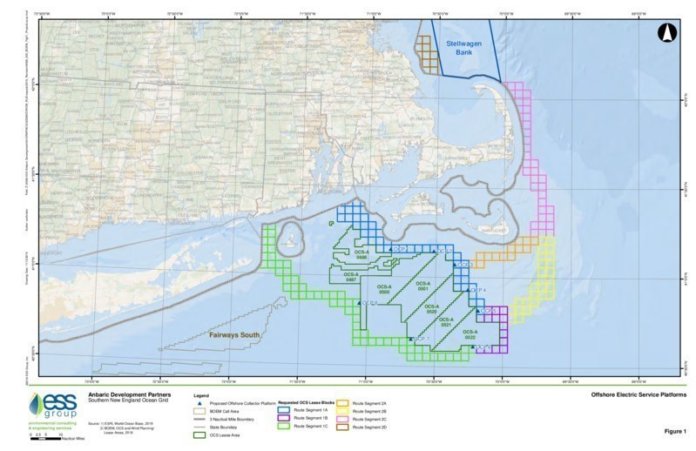Offshore transmission developer Anbaric has filed an application with the Bureau of Ocean Energy Management (BOEM) for non-exclusive rights-of-way to develop the Southern New England OceanGrid – an independent, open-access offshore transmission system designed to maximize the region’s offshore wind resources.
Once approved by BOEM, the transmission network on the outer continental shelf would link the existing wind lease areas via a common system and deliver that power to the onshore grid. Benefits will include greater efficiency, more reliability, fewer environmental impacts and the ability to direct the energy to specific areas, like Boston and/or the South Coast.
The Southern New England OceanGrid would be developed in phases and anticipates an offshore transmission network connecting up to 16 GW of offshore wind to Massachusetts, Rhode Island and Connecticut. Additionally, it includes transmission line routes that connect BOEM lease areas directly into Boston, Rhode Island’s Narragansett Bay, Massachusetts’ South Coast, and Connecticut to provide offshore wind-generated electricity to area residents.
The Southern New England OceanGrid will be built out over a period of 20 years.
“As offshore wind’s potential gains momentum, it’s time to think big and plan rationally,” says Edward N. Krapels, CEO of Anbaric. “It becomes clearer every day that transmission must lead the way towards greater scale, reliability and efficiency, just as it has in Europe. Individual wind farm developers have gotten the industry off to a good start, but we now need a networked grid to minimize conflict and create a truly reliable offshore transmission system that will substantially de-risk wind projects.”
Anbaric’s BOEM filing underscores the potential environmental benefits of building an open-access, independent transmission system.
“Anbaric’s Southern New England OceanGrid offers the advantage of reducing the overall footprint and potential environmental and socioeconomic impacts of transmission infrastructure. The fishing industry that has been working these waters for hundreds of years is one use that will benefit from rationally planned and implemented transmission,” Krapels adds.
Anbaric’s application to BOEM lays out the minimum number of offshore collector platforms (OCPs) and associated transmission corridors to efficiently obtain the maximum amount of clean power from BOEM lease areas off the southern coast of New England.
Anbaric requested that the federal agency post the application in the Federal Register for public comment no later than Jan. 1, 2020. Once posted, there will be a 30-day public comment period during which others may indicate that they have a competitive interest. It is also an opportunity for comments on environmental, fishing, historic and cultural resource, tribal and economic impacts.
Anbaric currently has an application with BOEM for a New York/New Jersey OceanGrid that remains under review.




